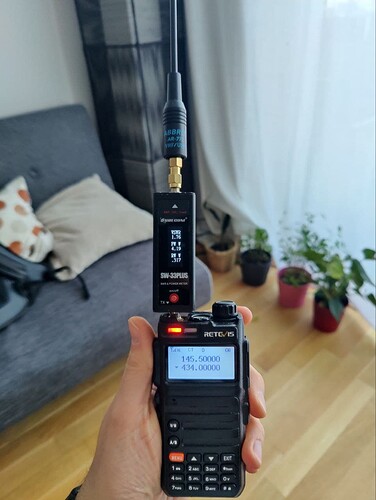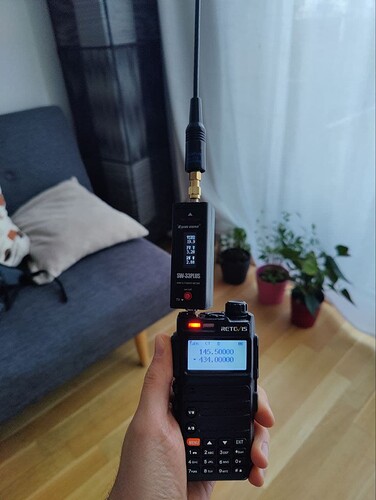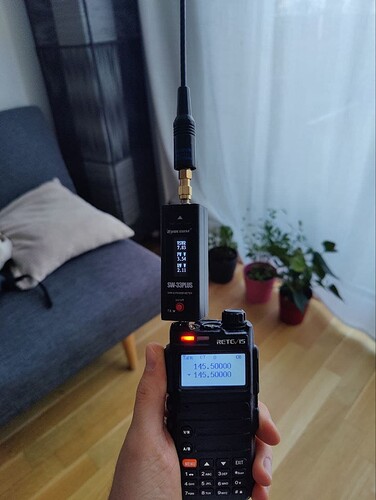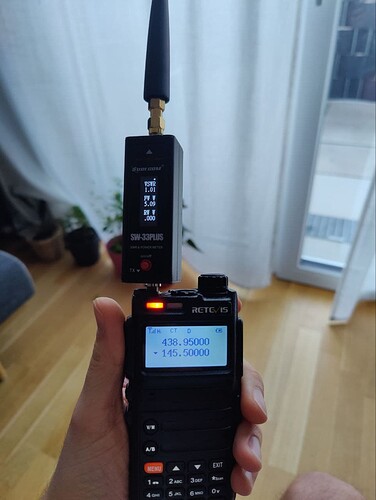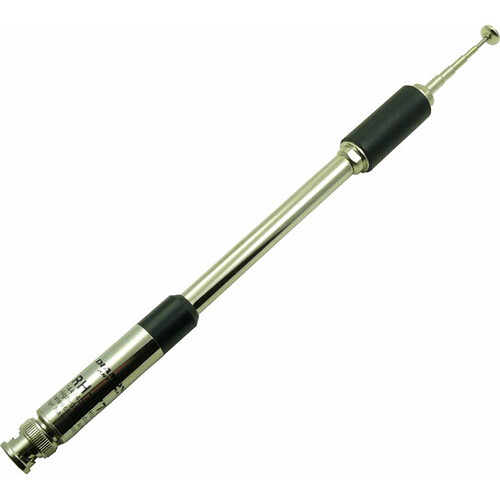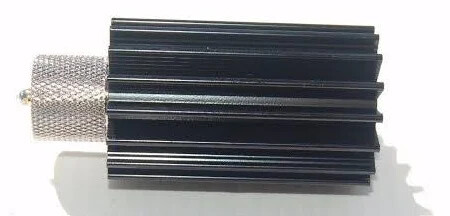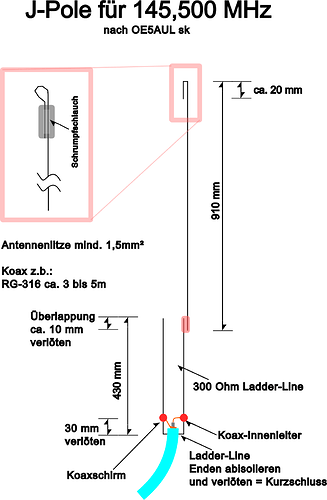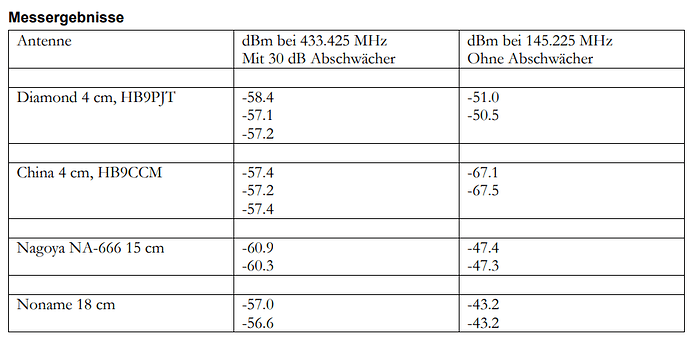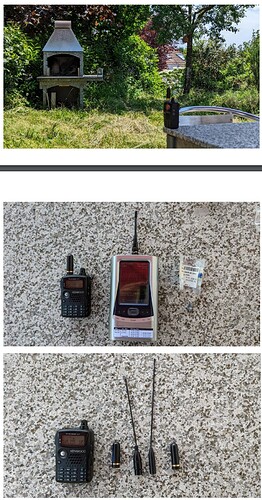This thread is starting to grow legs, which is good. It is a subject that I am currently dealing with trying to find a suitable handheld antenna for SOTA activations. I have watched your video @MM0EFI comparing the Diamond RH770 and the clone, namely the TWAYRDIO RH770. It came at time when I had already ordered the said clone from Amazon after watching Josh at Ham Radio Crash Course test it along side various other antennas. To Josh’s surprise the TWAYRDIO came in as the second best, only beaten out by the MFJ LongRanger. The Long Ranger was in fact the antenna that I would have preferred to have purchased but the issue we have here in the antipodes is one of exorbitant freight charges from the US. The cost of the antenna was going to be USD$34 but the freight was going to cost me USD$76. That equates to NZD$179 or UK£87 where as the TWAYRDIO I landed here for NZD$42.
Anyway, I digress. I am going through the exercise of looking at handheld antennas only because I have updated my trusty and much loved Baofeng UV-82 to one of the last of the Yaesu FT-60R’s. I have made this upgrade only because when working peaks with commercial radio installations I was suffering the dreaded ‘FrontEnd Overload’ and while chasers could clearly hear me I was not hearing them. The antenna that I have been using on the Baofeng is an Abbree 42 inch Foldable CS Tactical. As goofy as they look, they perform well. With the new new FT-60R comes an SMA Male connector as apposed to the Baofeng’s SMA Female. It was either an adapter, my second choice, or sourcing a new antenna.
This is my collection of Handheld antennas to date. First picture with antenna’s folded or retracted and second picture with them extended.
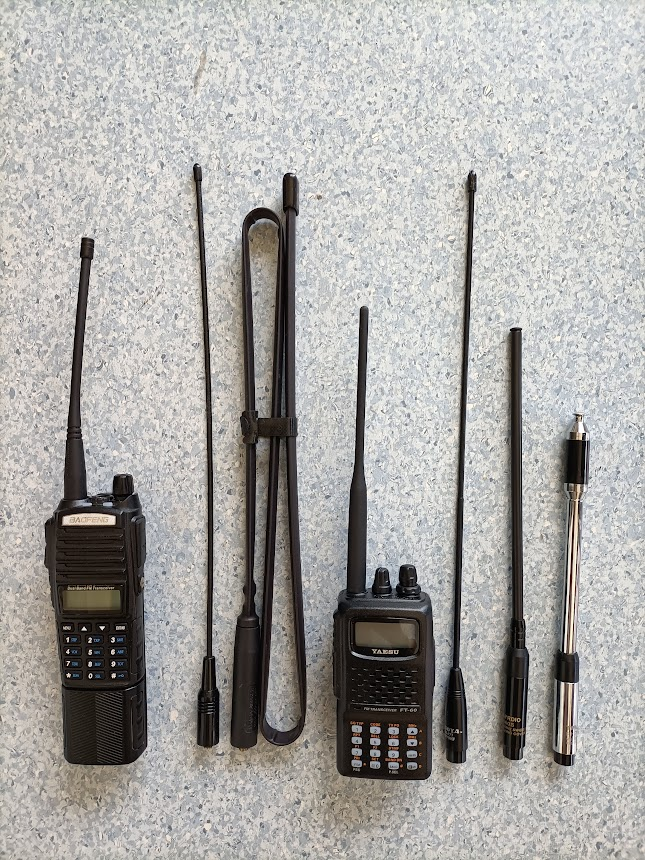
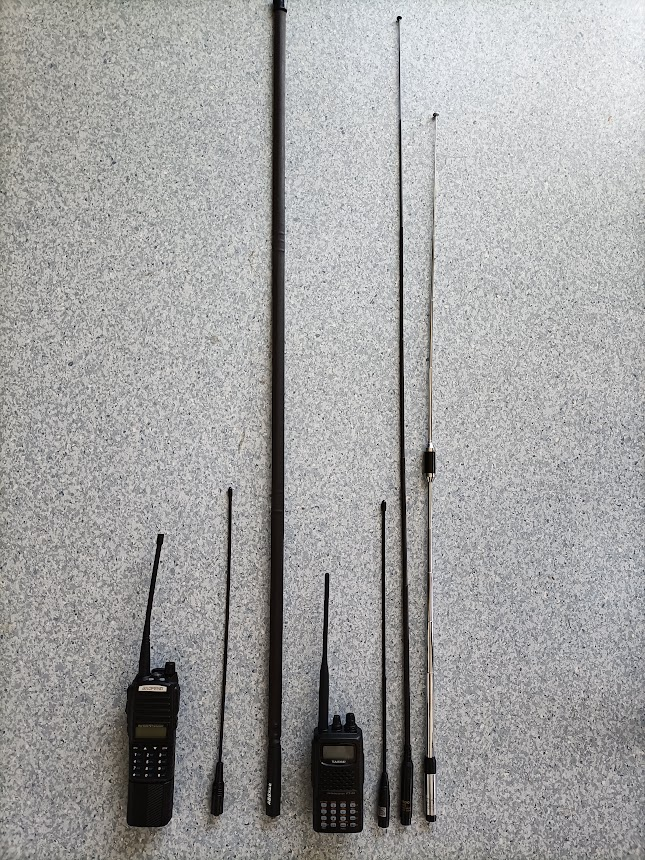
Radios and antennas listing from the right. Baofeng UV-82 with standard rubber ducky, Nagoya NA-771, Abbree 42 inch, FT-60R with standard rubber ducky, Nagoya NA-771, TWAYRDIO RH-660s, TWAYRDIO RH-770.
To date, I have only tried all of these antennas out on 2 meters as that is my target frequency. First, the Nagoya’s. I am pretty sure one of them is a fake but that said they both work reasonably well, better than the standard rubber duckies, even though one has a higher SWR than the other. Both come in under 2:1. Then the Abbree. As I have said, it appears goofy when using it but I swear by it. Now the two dark horses, the TWAYRDIO’s. The RH660-s has abysmal SWR when fully extended; something like 3:1. Shorten it one section, which brings it to the same length as its bigger brother, the RH-770 and the SWR goes down to 1.1:2. The RH-770 when fully extended gets an SWR of 1.3:1. Both are acceptable to me, although I prefer not to have to adjust the length on my HT antennas to get a good SWR.
Running some tests with a fellow ham simplex at a distance of 23km the RH-770 works best followed by the RH-660s and then the Nagoya. All gave very readable reception both ends. For interest, here was our signal path.

Then last weekend, from my QTH I used the RH-770 to chase a SOTA activator 17km away. Again the signal path.
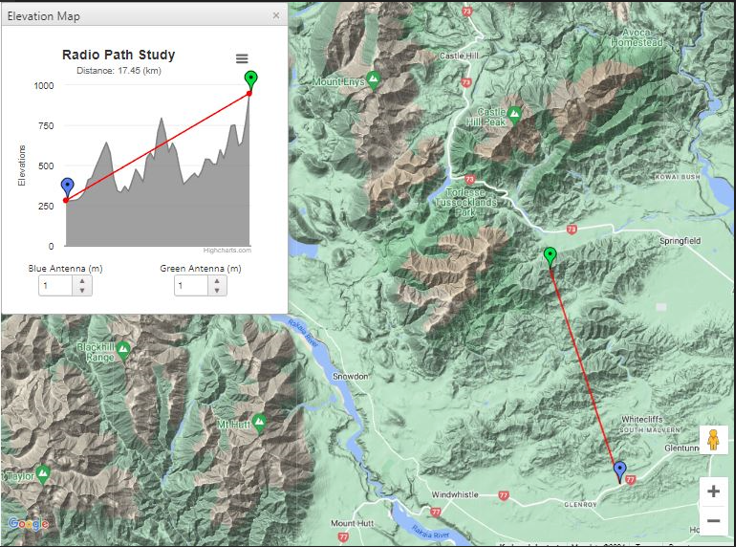
Shorter distance but a little more challenging terrain. I was using the FT-60R, he was using an FT-70 with the standard rubber ducky. He reports that my reception was 59+ and he had to turn his volume down.
Now none of this is very scientific but if nothing else it gives some indications of the antenna’s effectiveness, or not. Since this test I have managed to track down a genuine Diamond SRH770 and a SRH770S from StrictlyHam.com.au at a reasonable price and shipping. They have similar model numbers but are quite different beasts. SOTA afficanado’s in the US were apparently used to test the SRH770S when it was being developed by Diamond and they swear by them for SOTA use. I particularly look forward to testing mine. Both antennas should arrive next week and I shall report on my tests with these.
Cheers
Phil ZL2VTH

